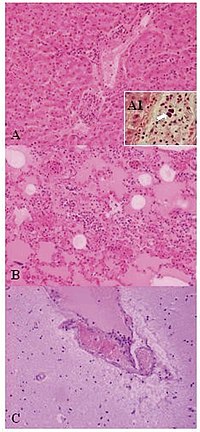
Photo from wikipedia
Lead (Pb) is one of the most common heavy metal pollutants in the environment, which can indirectly or directly threaten human health. Lead immobilization by apatite can reduce the effectiveness… Click to show full abstract
Lead (Pb) is one of the most common heavy metal pollutants in the environment, which can indirectly or directly threaten human health. Lead immobilization by apatite can reduce the effectiveness of Pb cations via the formation of pyromorphite (Pyro). However, the formation of Pyro is always depending on the release of phosphorus (P) from apatite. Phosphate-solubilizing fungi (PSF) can secrete large amounts of organic acid to promote the release of P from apatite. Although the combination of PSF and apatite has shown a huge potential in Pb remediation, this pathway needs to be more attention, especially for organic acid secretion by PSF. This research mainly reviews the possible pathway to strengthen Pb immobilization by PSF and apatite. Meanwhile, the limitation of this approach is also reviewed, with the aim of a better stabilizing effect of Pb in the environment and promoting the development of these remediation technologies.
Journal Title: Frontiers in Bioengineering and Biotechnology
Year Published: 2023
Link to full text (if available)
Share on Social Media: Sign Up to like & get
recommendations!